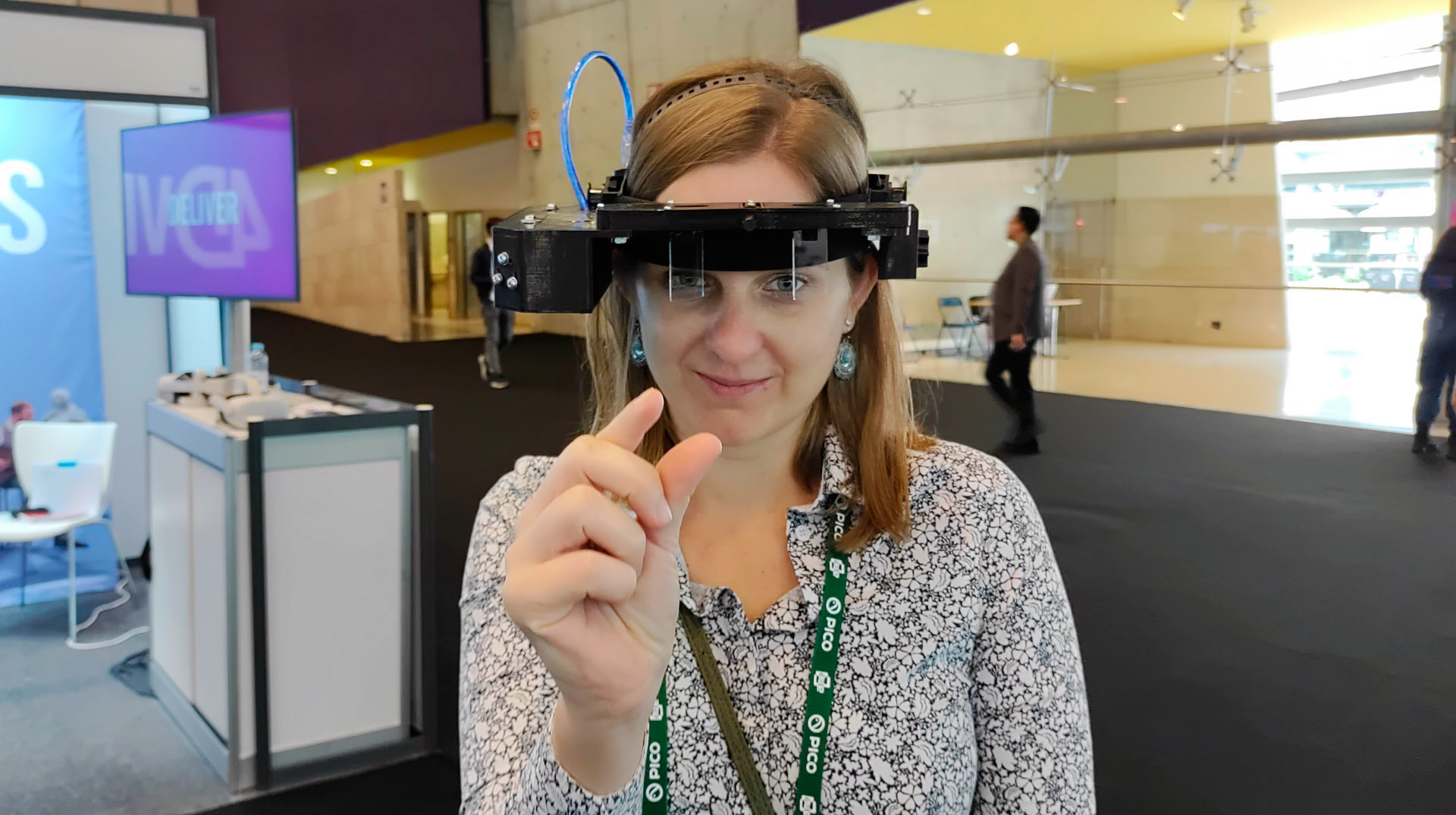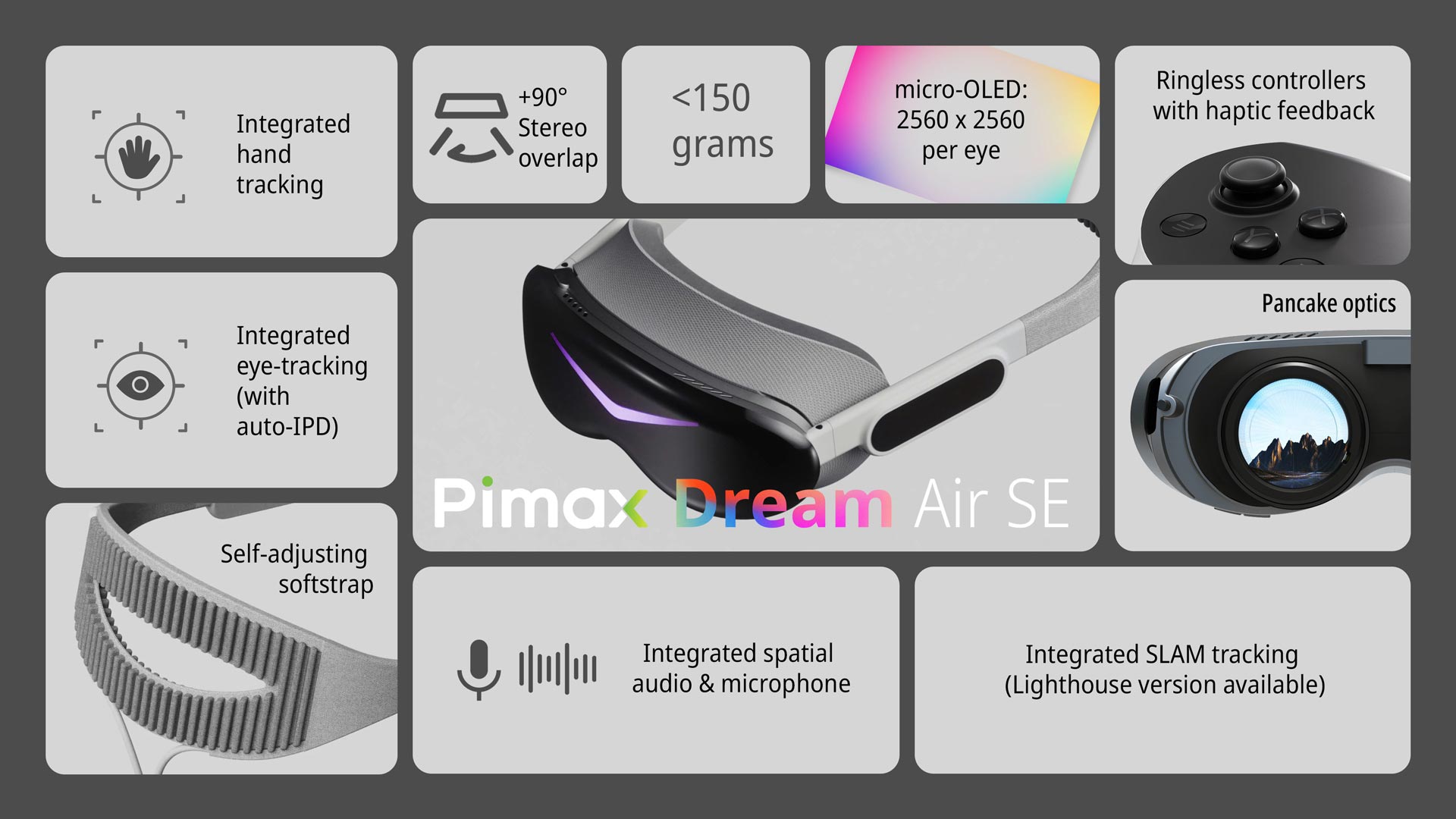OpenAR brings accessible augmented reality to students and developing countries
At AWE Europe one of the projects I loved the most has been OpenAR. It is an association that tries to create affordable open-source headsets, which are far from being perfect but could be very important for students and professionals in developing countries to start experimenting with immersive realities.
OpenAR Thumb Controller
While I was walking around the AWE show floor, I stopped at the Spatial8 floor because there I saw my friends Olli Tiilikainen and Teemu Ollilainen with which I interacted a lot via social media. Since we were meeting in person for the first time, I asked Olli what he was doing there, and he introduced me to OpenAR.
The first thing that he showed me was some kind of finger cap that you can put on your thumb to use as a controller. Do you recall the rumor in town about the upcoming Apple headset coming with a sort of tracking ring you can use to control the device? Well, imagine the poor-man version of that, 3D printed.

Olli turned on his smartphone, put the cap on his thumb, then started slowly sliding on it with the fingertip of his index finger. The PDF viewer on the smartphone reacted accordingly, changing page or scrolling depending on how Olli was moving his finger on the device. It basically was a very small trackpad attached to his thumb.

Honestly I was not that attracted by the idea of smartphone control… I mean, if the screen is touch and I have the fingers close to it, it is much faster to just swipe the finger on it (it is called touchscreen for a reason)… but I was thinking about some possible applications in mixed reality, where this kind of controller can be used for instance to control a media player in XR. You can go forward, backward, and skip a track by just slightly sliding one finger tip over the other, an operation you can do by lying comfortably on a bed, without even raising your hands (like hand tracking would require) and without having a bulky controller with you. I see some interesting possible applications in XR with it.
And there is one more thing: the shell of the small device is detachable from its small control unit, so it is possible to have thumb controllers of different sizes: you have just to find the size that fits you and put the electronic brain inside it and then use it. Easy peasy.

The device was very rough and didn’t have an Apple on it, but it worked, and it was quite cheap. The overall cost to assemble it is just 30€. Of course, it is all open source, and you will be able to find the instructions on how to do that on the Open AR website (I will leave you all the links in a while).
OpenAR AR headset
It turned out that the thumb controller was just the appetizer. On the desk of the booth, there was also a very weird pair of glasses, so I asked Olli what was it about. He told me that they were the DIY AR glasses by OpenAR. I looked at them and they seemed to me some Frankenstein electronic abomination, so of course, I wanted to try it!

The “glasses” (which absolutely didn’t look like glasses) were 3D printed and hand assembled and felt a bit fragile in my hand. I put them on my head, and then I closed a few knobs that were meant to make the headset fit on my head. They felt a bit flimsy (like all 3D printed stuff) and I feared breaking the device while operating them, but actually, it resisted. When the headset was on my head, I could perceive that the comfort and this headset can’t even stay in the same sentence.
Then I looked in front of me, where two slanted pieces of glass were in front of my eyes. They had been positioned and rotated by Olli so that to roughly match my IPD. I looked in front of me and I could see a blue wireframe cube rotating in front of my eyes. Welcome back 1985.
Jokes apart, it was amazing. I mean, if I had to judge this device from the point of view of an average consumer, it is terrible. But as a technologist, I find it amazing, instead. Someone managed to 3D print some stuff, buy some components (including an Arduino board), and assemble this all to create AR smartglasses starting from zero. And it worked in front of my eyes. And do you know what was the cost of all of that for the university? Around 20 euros. Wow. Of course, it will probably cost you more if you have to manufacture it at home, but the price will still be very low.

I was also shown the next version that should be presented at the beginning of next year. These new glasses, part of OpenAR 2.0, felt much more stable and refined. The design also reminded me a bit more about other smartglasses, like Google Glass. Inside there was a Raspberry Pi board, and they also featured a much better display and comfort. I put it on my head, and while still 3D printed, it felt much better than the other model.

The cool thing about the fact that there is a Raspberry board is that the device is so standalone. I mean, really standalone: you can put it on a desk, connect to it a keyboard, a mouse, and a screen, and use it as your computer! It is so kinda versatile. The price for this new version should be around 70€ for the materials. It is much more than the previous version but in exchange for much better quality.
Being all these projects opensource, they can also be completely customized by the community. I was having a look at the website of these projects to write this article, and I could find all the assembly instructions, plus the guide on how to create your custom modules to attach to the glasses. On the same website is also amazing to see the roadmap that there is going forward: next year these glasses should be able to feature also some object recognition capabilities, for instance.

Who is this for?
Olli made clear to me that these are not devices meant for commercial usage and of course have no mainstream appeal. They are 3D printed, have no compatible content, and must be assembled by hand. It is a project that has stemmed from a Finnish university for educational purposes, not something that aims at becoming the next HoloLens.
It remains anyway a very interesting project because it can help in democratizing AR in certain niches. I think about universities, where many students could experiment with these devices, but also about high schools, which usually have very low budgets but could afford these gadgets. It could become the first foray into XR for some computer science or electronic students. I also think about developing countries, where it is hard for most people to buy a HoloLens 2 or even a RealWear smartglass, but maybe it is possible to build this kind of glasses by buying the components from China. Of course, then it is something that can be very interesting for DIY fanatics or open-source supporters.
Personally, I love the idea behind these glasses of democratizing augmented reality and creating a community around it. That’s why I hope that many of you will get interested in the developments of the OpenAR team and start supporting this project.
Further references
If you are interested in discovering more about OpenAR, you can do it at the following websites:
- OpenAR 1.0 project: https://sites.uef.fi/openar/
- OpenAR materials: https://openar.fi/openar-materials/
- OpenAR Thumb Controller: https://openar.fi/the-thumb-controller-for-openar-2-0/
- OpenAR Roadmap: https://openar.fi/roadmap-of-diy-open-ar-glasses/
- OpenAR Github account: https://github.com/Open-Source-Community-for-AR
Disclaimer: this blog contains advertisement and affiliate links to sustain itself. If you click on an affiliate link, I'll be very happy because I'll earn a small commission on your purchase. You can find my boring full disclosure here.



